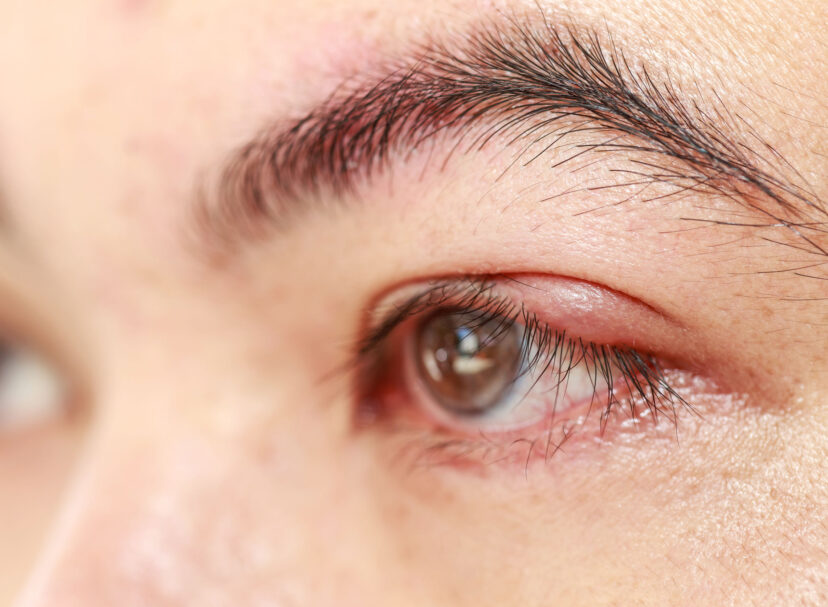There are a lot of things you can do to take good care of your eyes. This includes eating right, staying hydrated, getting enough sleep, seeing an eye doctor once each year, avoiding smoke, reducing your screen time, and daily hygiene with Cliradex Light. All of this will help you to keep your eyes healthy and your vision sharp – unless you happen to get a virus or an infection, or you are unlucky enough to be genetically predisposed to eye disorders. In both of those cases knowing the signs and symptoms to look for and making an additional visit to your eye doctor when they show up will help you have the best chance of maintaining the eye health you work so hard to achieve.
Genetic Eye Diseases

Here is the tough part. There are over 350 genetic eye disorders. These include albinism, color blindness, glaucoma, night blindness, retinoblastoma, corneal dystrophies, and keratoconus. You can find information about all of these and many more in a comprehensive resource maintained by the University of Arizona College of Medicine. Their database of hereditary ocular diseases has plenty of information on each of them. The resource database is written in language that almost anyone can understand, with links to more complex technical and medical information, as well as information on the genetics and data for each. (Source).
The A-Z resource is not designed so that you can look up symptoms but rather is meant to be a comprehensive informational resource that helps people understand the eye disorders that they, or their family members, have been diagnosed with. It serves a secondary purpose of preparing people to have good conversations with their eye health care professionals and be able to ask appropriate questions that help to empower their care.
Essentially, this makes it next to impossible to self diagnose, unless you know that one of the diseases runs in your family. According to the Cleveland Clinic, genetics play a major role in most of the eye diseases that cause blindness in infants, children, and adults. In fact, over 60% of blindness in infants is inherited. The diseases that cause this include congenital cataracts, congenital glaucoma, retinal degeneration, optic atrophy, and eye malformations. Additionally, 40% of people with ocular misalignment, or strabismus, which is most common in young children, have a genetic predisposition. Most adults that suffer from glaucoma or macular degeneration have a family history as well. Likewise, researchers have found evidence that even myopia and hyperopia, as well as astigmatism have genetic links. The genes for these diseases are being mapped and research included in the database at the University of Arizona as it is published.
Treatment for Genetic Eye Disorders

Genetic research is evolving and moving forward rapidly, so much of the information on these diseases changes as new studies and information become available. That said, one of the best tools to fight inherited eye diseases is early diagnosis and intervention. Much more is known about common diseases than many of the more rare diseases. The National Institutes of Health funds research on those rare diseases with more than 350 being cataloged. Also, most eye care health professionals will have a better handle on the more common diseases that they see more often. If you are suspected of having a rare eye disorder, whether it is genetic in nature or not, you will likely be referred to a specialist that will be able to guide your journey through the disease. Not every disease has a cure, so sometimes these genetic eye disorders will cause permanent and lasting complications or vision loss. However, many of them can be stopped or treated so that the symptoms do not become worse.
Hereditary Ocular Rosacea

An example of this is ocular rosacea, which is suspected of being hereditary. Ocular rosacea is one of four subtypes of rosacea. Rosacea is a chronic inflammatory disease suffered by at least 14 million people in the U.S. The ocular subtype affects your eyes with the same range of symptoms that develop on the skin. These include red, swollen eyelids and dry burning eyes. The symptoms are triggered by conditions such as sun exposure, emotional stress, exercise, medications, certain foods and beverages, and Demodex mites.
There is not currently a cure for rosacea, however, regular eyelid and skin cleansing can help manage the symptoms and soothe the eyes and skin. There are also oral and topical medications that your doctor may prescribe for you that help to reduce or eliminate the redness and flushing that is commonly seen in the skin of the face with outbreaks.
The doctor recommended eyelid cleanser is Cliradex. Cliradex Light Foam is a gentle product that is preservative free and 100% vegan with a calming sensation. It has been specifically designed to use on sensitive skin, including that of the face and in the immediate vicinity of the eye. It is the only commercially available product that includes isolated 4-Terpineol, or T-4O, which is the important compound found in tea tree oil. T-4O is scientifically demonstrated to eliminate Demodex mites which may trigger ocular rosacea.





